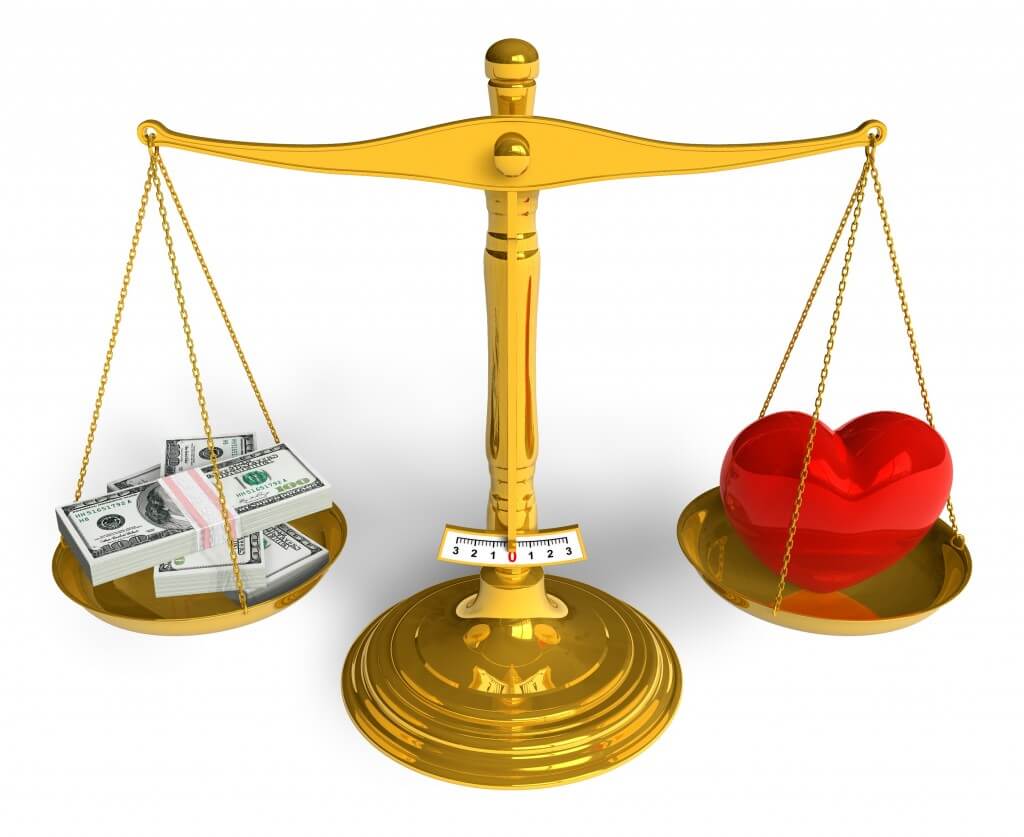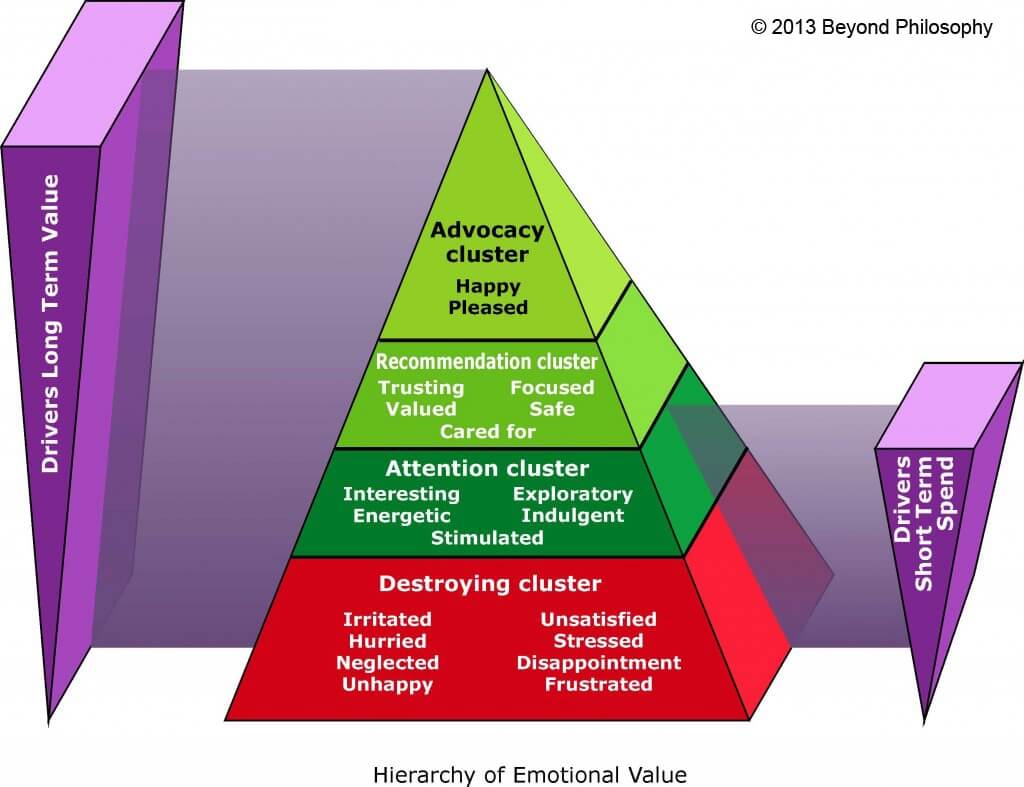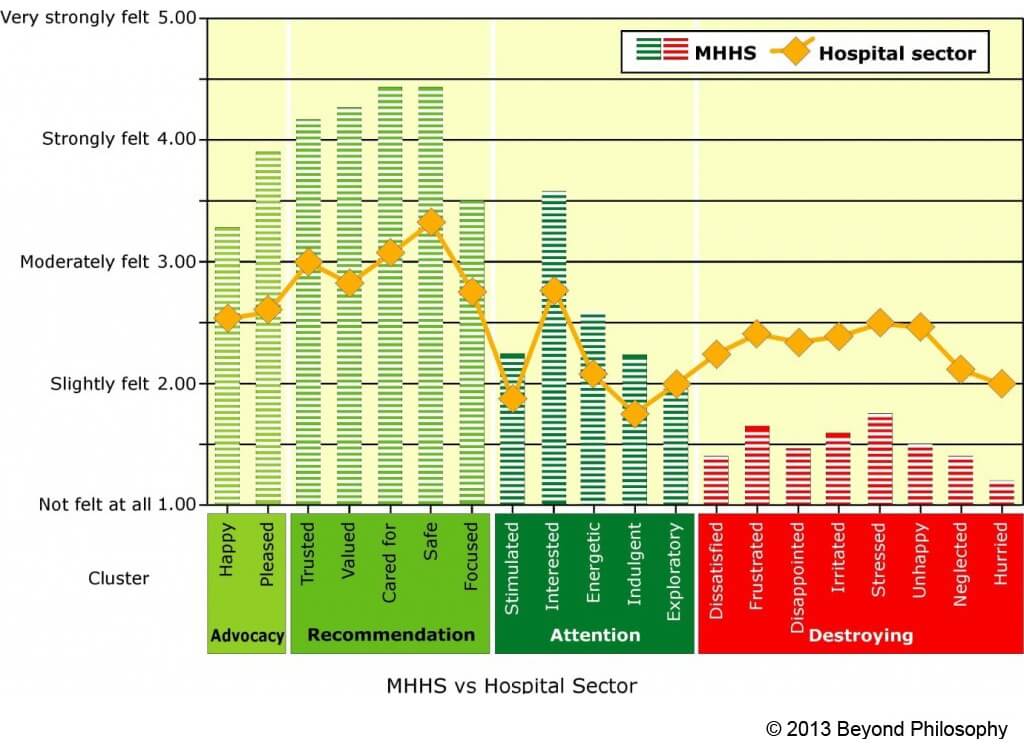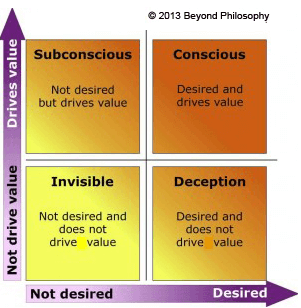
Emotional Signature
Who are you loyal to in your life? Your answer is probably family and friends. There is an emotional bond that has beenbuilt up between you. This bond is hard to break. Your family and friends can do things to you that you don’t like, but still you remain loyal. Many organizations talk about their desire to have ‘loyal’ Customers as they know this is the most cost effective way to make more money. However, ironically they seem to miss the fact that loyalty is built on this emotional bond. Very rarely do you hear an organization talking about Customer emotions; instead they talk about price, deliveries, speed etc.
Research shows over 50% of a Customer’s experience is about how a Customer feels but which emotions drive or destroy $$$ in a Customer Experience? So why do many organizations not focus on this? The challenge is emotions are ‘soft & fluffy’ and difficult to measure the ROI.
Therefore back in 2005 I set the Beyond Philosophy team on a quest to discover which emotions drive and destroy value to be able to prove the connection. When I say ‘value’ I mean an increase in spend, Customer Loyalty, Customer retention, Customer satisfaction or Net Promoter® etc. Working with London Business School we conducted two years research which culminated in my third book, DNA of Customer Experience: How emotions drive and destroy value -Palgrave MacMillan 2007.
Our research shows that all organizations have an Emotional Signature®, a level of emotional engagement with their Customers and these emotions manifest themselves in every Customer Experience.
Our research also discovered that there are twenty emotions that drive and destroy value and we can statistically prove by how much. This applies in Business to Consumer and Business to Business. These are the emotions.
Let me explain what you see here:
Destroying cluster: These are the emotions that, if evoked, will destroy value.
Attention Cluster: These are the emotions that marketing attend to. They try and make the customer feel interested; they try to stimulate Customers to explore what is being offered. But this doesn’t mean the Customer will stay with you. These emotions drive short-term spend but not long-term spend.
Recommendation and Advocacy Cluster. If you want your Customers to stay you need to be evoking these emotions that drive long term value and are measured through Customer loyalty, Net Promoter® etc.
To discover your level of emotional engagement you need to ask your Customers what they feel about you. Below you can see a chart demonstrating the emotional profile of Memorial Hermann Hospital System in Houston, Texas taken from a case study. You will see, following our work with them they were doing very well on the positive and negative emotions against the hospital sector.
I am pleased to say; the whole idea of Customers’ emotions has now been accepted. As Forrester points out in ‘2013 Predictions for the Customer Experience Industry’ which states:
“Emotional insights will take center stage. The idea that happy customers are more likely to remain loyal, try new products and services, and spread good news about their experiences has started to catch on. Over the past several months, we’ve seen a rise in the number of companies pondering the connection between enjoyment and metrics like satisfaction and Net Promoter Score® (NPS®). In fact, one global company statistically demonstrated that several emotional factors trump NPS® in predicting customer loyalty, effectively dethroning “would you recommend?” as the ultimate question. As firms start to emphasize customer emotion in 2013, we expect to see more vendors developing offerings like Beyond Philosophy’s Emotional Signature, which examines the rational, subconscious, and emotional elements of an experience.”
This is all great but the issue becomes what do you do about it? What do you have to change that will drive value?
To answer this we need to introduce the whole area of the subconscious experience. We don’t have enough time to go into this here but suffice it to say, there is a big difference between what Customers say and do. For example, Disney know when they ask Customers what they would like to eat at a theme park, typically people will say they would like to have an option of a salad. But Disney also knows that people don’t eat salads at theme parks! They eat hot dogs and hamburgers. Another example is; how many people say they are worried about the environment but when they are offered eco-friendly products that are slightly more expensive than the normal products they don’t buy them?
In this model it shows what customers desire, i.e. what they say they want, which can be very different to what drives ‘value’. You can place the different attributes/touchpoints of your Customer Experience over these four boxes.
Conscious: Customers say they desire it and it does drive value
Subconscious: Customer doesn’t say they desire it but it does drive value
Deception: Customers say they desire it but it doesn’t drive value
Invisible: Customer doesn’t desire it and it doesn’t drive value.
It’s when you distribute the attributes or touch points of your Customer Experience across these four boxes that you really see where to focus your efforts on.
Does your company look at the emotional side of the Customer Experience? What levels of emotional engagement do you focus on? We have recently released a whitepaper which answer such questions in more depth; ‘Emotional Signature® (ES) – The role of emotions in Customer Experience’
If you are interested to find out more, why not come along to our next webinar ‘ How Emotions Generate $$$! – Emotional Signature’.
| Colin Shaw is founder & CEO of Beyond Philosophy, one of the world’s first organizations devoted to customer experience. Colin is an international author of four best-selling books. Beyond Philosophy provide consulting, specialised research & training from offices in Atlanta, Georgia and London, England. Follow Colin Shaw on Twitter: @ColinShaw_CX |




